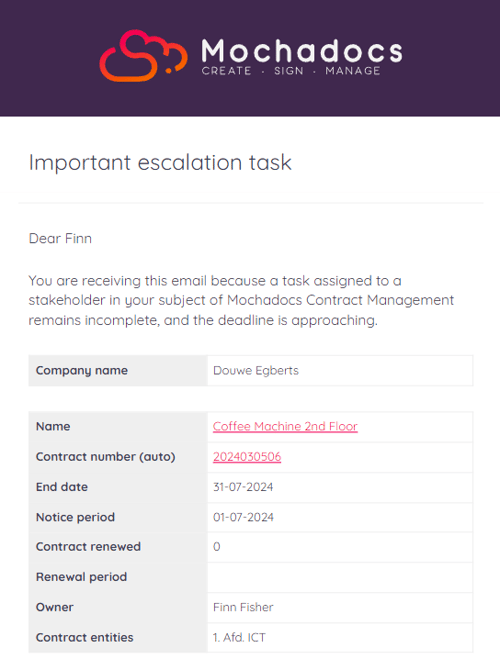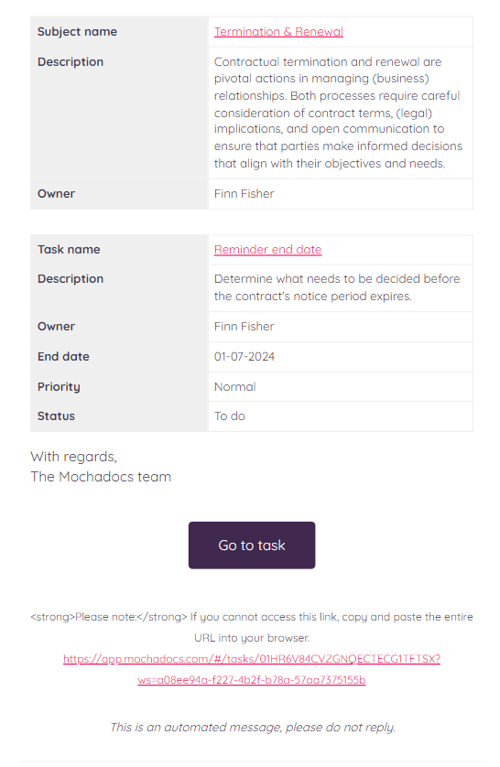1. Header of the email
The header explains the reason for receiving this task notification.
Example 1: Escalation email notification
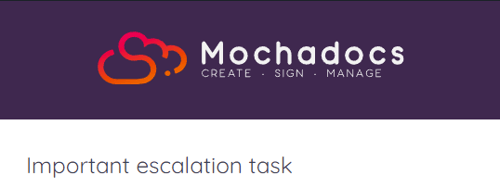
Example 2: Renewal email notification
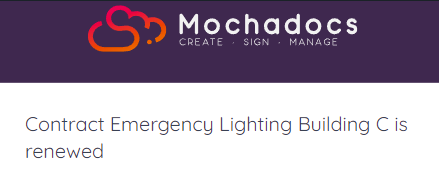
2. Contractual information
The contractual metadata is located beneath the header in the email, providing a general overview of the key details related to the contract. This email will be sent after the contract has been renewed. There is not task involved in this email notification. Additionally, you can click the contract name or contract number link, which will automatically direct you to the contract.
Example 3: Renewal email notification
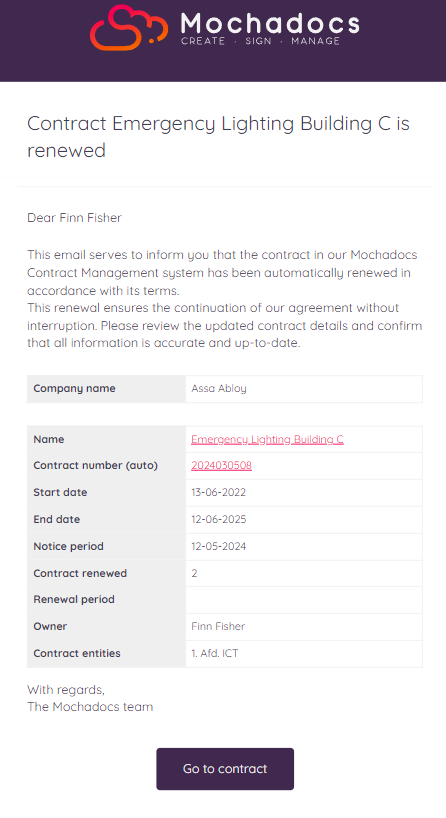
3. Task Notification: Subject description
Most tasks in a contract pertain to specific subjects within the contract. These tasks might relate to a particular clause or an internal process, such as evaluating the contract. When a task is subject-related, the subject information will be included in the task email notification. Additionally, you can click the subject name link, which will automatically direct you to the subject related to the contract.
Example 3: Subject description
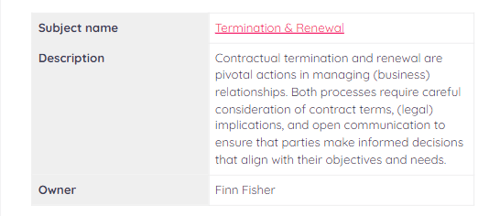
4. Task Notification: Task description and end date
By reading the task name and description, you will have the information needed to execute the task. It is crucial to follow the instructions provided. Additionally, you can click the task name link, which will automatically direct you to the task related to the contract.
Example 3: Task description and end date
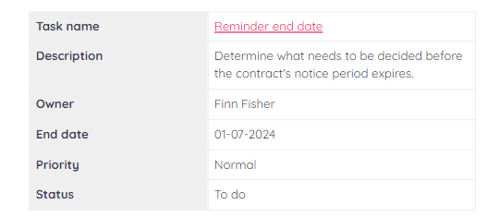
5. Task Notification: Full view
A full overview
